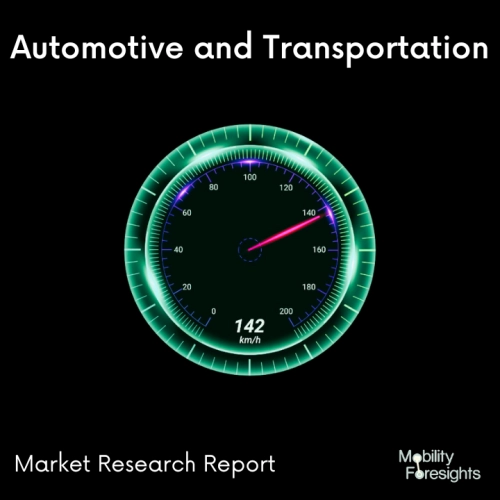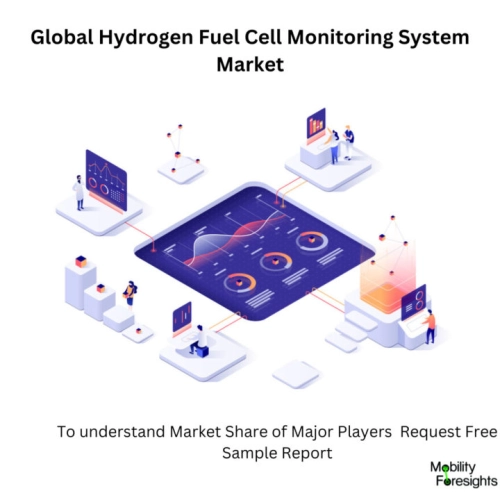
- Get in Touch with Us

Last Updated: Apr 25, 2025 | Study Period: 2023-2030
GLOBAL HYDROGEN FUEL CELL MONITORING SYSTEM MARKET
INTRODUCTION
From calculating the electrical properties and efficiency of fuel cells and electrolysers, the Fuel Cell Monitor Pro 4.0 by H-TEC enables real-time monitoring of each fuel cell in the fuel cell stack.
A fuel cell works by mixing hydrogen with air in the presence of a catalyst to produce water vapour, which is the only byproduct. This process produces electricity that powers an electric motor.
A fuel cell is a device that converts energy rather than storing it, in contrast to a battery. An electrochemical process, rather than combustion, is how a fuel cell produces electricity.
Hydrogen and oxygen are mixed to produce electricity, heat, and water in a fuel cell. A wide variety of applications are possible for hydrogen and fuel cells. These can be used to power homes, cars, trucks, and other
GLOBAL HYDROGEN FUEL CELL MONITORING SYSTEM MARKET SIZE AND FORECAST

The Global Hydrogen Fuel Cell Monitoring system market accounted for $XX Billion in 2022 and is anticipated to reach $XX Billion by 2030, registering a CAGR of XX% from 2023 to 2030.
NEW PRODUCT LAUNCH
Launch of the H TWO Dedicated Fuel Cell System Brand by Hyundai Motor Group Today, the Hyundai Motor Group unveiled "HTWO," a new brand to reflect the company's revolutionary hydrogen fuel cell technology.
Hyundai will promote hydrogen as a useful energy for people, building on its more than 20 years of experience in hydrogen fuel cell technology. The letters HTWO stand for the hydrogen molecule (H2) as well as "Hydrogen" and "Humanity," the two cornerstones of Hyundai's fuel cell business.
Hyundai's global fuel cell business will be facilitated and the hydrogen ecosystem will expand with the launch of the new fuel cell system brand.With HTWO, the Hyundai Motor Group is pushing up its efforts to create a next-generation hydrogen fuel cell technology that can be used in a variety of modes of transportation, including UAM, cars, ships, and trains.
The next-generation fuel cell system will offer improved performance and durability at a reasonable price in a lighter architecture with improved energy density in addition to being accessible for a wide range of mobility products and services.
The group aspires to provide a highly effective and varied range of hydrogen-powered automobiles using its next-generation fuel cell system.
Hyundai Motor Group has developed its fuel cell system business by strategic alliances with global suppliers of energy, hydrogen, and logistics. This has accelerated the emergence of a hydrogen society and laid the groundwork for the company's HTWO brand.
COMPANY PROFILE
THIS REPORT WILL ANSWER FOLLOWING QUESTIONS
| Sl no | Topic |
| 1 | Market Segmentation |
| 2 | Scope of the report |
| 3 | Abbreviations |
| 4 | Research Methodology |
| 5 | Executive Summary |
| 6 | Introduction |
| 7 | Insights from Industry stakeholders |
| 8 | Cost breakdown of Product by sub-components and average profit margin |
| 9 | Disruptive innovation in the Industry |
| 10 | Technology trends in the Industry |
| 11 | Consumer trends in the industry |
| 12 | Recent Production Milestones |
| 13 | Component Manufacturing in US, EU and China |
| 14 | COVID-19 impact on overall market |
| 15 | COVID-19 impact on Production of components |
| 16 | COVID-19 impact on Point of sale |
| 17 | Market Segmentation, Dynamics and Forecast by Geography, 2023-2030 |
| 18 | Market Segmentation, Dynamics and Forecast by Product Type, 2023-2030 |
| 19 | Market Segmentation, Dynamics and Forecast by Application, 2023-2030 |
| 20 | Market Segmentation, Dynamics and Forecast by End use, 2023-2030 |
| 21 | Product installation rate by OEM, 2023 |
| 22 | Incline/Decline in Average B-2-B selling price in past 5 years |
| 23 | Competition from substitute products |
| 24 | Gross margin and average profitability of suppliers |
| 25 | New product development in past 12 months |
| 26 | M&A in past 12 months |
| 27 | Growth strategy of leading players |
| 28 | Market share of vendors, 2023 |
| 29 | Company Profiles |
| 30 | Unmet needs and opportunity for new suppliers |
| 31 | Conclusion |
| 32 | Appendix |